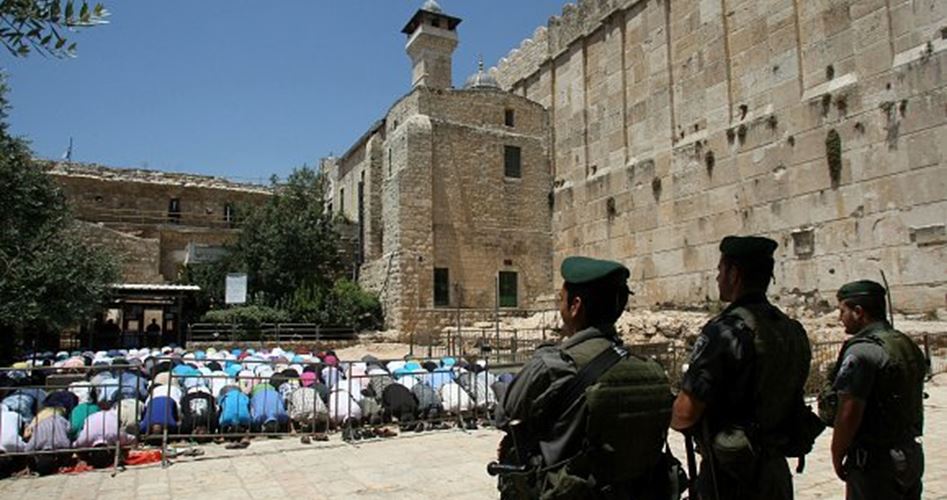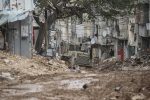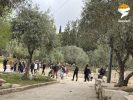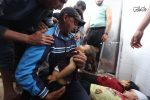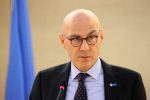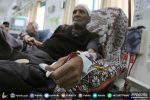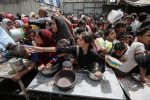23 years have passed since the Ibrahimi Mosque massacre was committed when the extremist Israeli settler Baruch Goldstein murdered 29 Palestinians and injured 150 others who were performing dawn prayer at the mosque. The massacre is still fresh in the memory of the Palestinian people as one of the most heinous Israeli crimes.
The Old City of al-Khalil shall never forget the massacre which was committed on the 15th Ramadan 25th February 1994 and constituted a painful stage in the Judaizaion process of the Ibrahimi Mosque.
Bloody memory and escalating anger
The residents of al-Khalil city still recall the incident the bodies of the murdered and injured worshippers crammed in the mosque the sound of the gunfire the blood scattered everywhere the nonstop movement of ambulances the families heading to hospitals to recognize their martyrs the tension and the unprecedented anger at the Israeli occupation forces (IOF).
The massacre began when Goldstein opened fire at about 500 worshippers who were kneeling in prayer at dawn 29 of whom were killed instantly while 150 were injured. While the Israeli terrorist was trying to refill ammunition to kill more worshippers he was beaten by the worshippers and killed.
During the massacre the Israeli soldiers who were present near the doors of the mosque closed its doors to prevent worshippers from escaping and prevent those coming from outside from entering the mosque’s courtyards to rescue the injured.
Following the massacre a number of other Palestinians were shot dead by Israeli soldiers outside the mosque and during the funerals of the martyrs raising the total number of martyrs to 50 including the 29 who were killed in the mosque.
On the same day confrontations with Israeli soldiers and anger escalated in al-Khalil and all Palestinian cities resulting in the martyrdom of 60 Palestinians.
Violations continue
The IOF closed the Ibrahimi Mosque and the Old City for 6 months for alleged investigations and formed the unilateral Shamgar committee to investigate the massacre and its causes.
The committee came out at the time with a number of recommendations the first of which was dividing the Ibrahimi Mosque to two parts and granting Jews sovereignty over the largest part which represents 60% in a bid to Judaize the mosque.
The Israeli committee imposed more hardships on the Palestinian citizens in the Old City placed tight security at the entrances of the mosque and banned the Adhan (call of prayer) in the Ibrahimi Mosque many times.
The usurped part of the mosque includes shrines and tombs of prophets including the tombs of Yaqoub and his wife Ibrahim and his wife Sarah and Yusuf as well as the mosque’s courtyard.
Later on the Israeli occupation authorities (IOA) placed 26 cameras electronic gates checkpoints and voice and image sensors at all entrances of the mosque in an area of no more than 200 square meters and closed all the roads leading to the Ibrahimi Mosque except for one gate with strict security measures. The IOA also closed a number of markets and streets in al-Khalil in an attempt to isolate the Old City.
The Israeli Shamgar committee recommended a complete opening of the mosque for 10 days annually only for Muslims and other 10 days only for Jews.
Who is Goldstein?
Baruch Goldstein who was 42 years old when he committed the massacre is one of the founders of the extremist Kach Movement. He emigrated from the United States in 1980 and lived in Kiryat Arba settlement which is built inside al-Khalil city.
When the Israeli Rabbi Moshe Levinger was asked whether he felt sorry for those who were killed at the hands of Goldstein he said that an Arab’s life is equal to that of a fly as far as he was concerned.
Most of the Jews in Israel consider Goldstein whose grave was turned into a shrine a saint. Israel has allocated a number of honor guards to perform military salute before his grave every morning.

